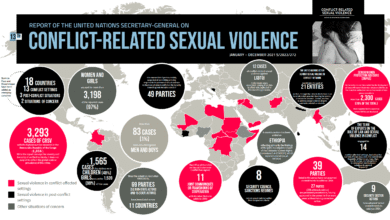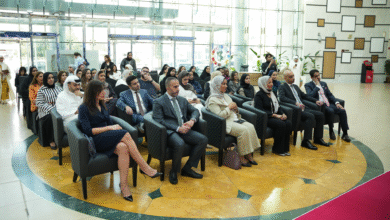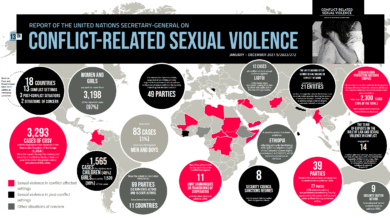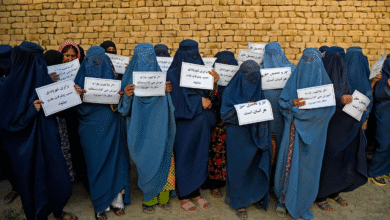Women in Sport: Closing the Gender Gap in Athletics
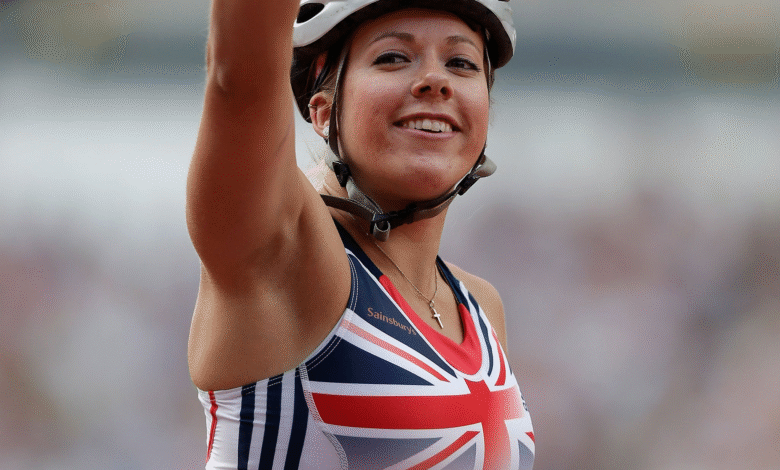
Women in sport continue to make strides toward equality, yet significant challenges remain. Amidst the celebrated Women’s Euro football championship in Switzerland, the UN human rights chief Volker Türk has spotlighted the glaring gender gap in sports and called for urgent action from governments and sports organizations. Despite the rising visibility of women athletes, with over a billion viewers tuning into the FIFA Women’s World Cup in 2023, issues like pay equity in sports and sports discrimination perpetuate an uneven playing field. Türk emphasized that all women, especially those from marginalized groups, need support to overcome barriers they face in achieving recognition and respect. By championing women’s sports rights and promoting fair treatment, we can foster an environment where female athletes thrive on and off the field.
The discussion surrounding female athletes and their significant contributions to competitive sports is crucial as we look to bridge gaps in representation and opportunity. As women’s athletics gain momentum, the dialogue shifts to essential themes like the necessity for equitable pay within entertainment sports and mobilizing efforts against discrimination faced by women in athletics. The call for comprehensive actions against gender disparities is more urgent than ever, as leaders like Türk advocate for systemic changes that ensure women’s sports are afforded the same respect and recognition as their male counterparts. We must not only celebrate the achievements of women in sport but also actively support initiatives that promote their rights and elevate their visibility. By addressing these critical issues, we can pave the way for a more inclusive and equitable future in sports.
The Urgent Need to Address the Gender Gap in Sports
The gender gap in sports continues to present significant challenges for women athletes across the globe. According to various reports, male athletes receive substantially higher salaries, sponsorship, and brand opportunities compared to their female counterparts. A stark representation of this disparity can be seen in team sports such as football, where male players can earn millions while female players struggle just to make a livable wage. Addressing this gap requires comprehensive dedication from both member states and sporting clubs to create a more equitable framework that recognizes and values women’s contributions to the sporting arena.
Moreover, men’s sports inherently dominate media coverage, which impacts women’s visibility and public interest in women’s sports. With only a fraction of coverage dedicated to female athletes, it perpetuates stereotypes and perpetuates the gender gap. The UN human rights chief, Volker Türk, has emphasized the need for stakeholders not only to advocate for equal pay but also to ensure that narratives surrounding women in sports are told. To truly level the playing field, a shift in societal values toward recognizing the importance of women in sport is essential.
Pay Equity in Sports: A Continuing Challenge
Pay equity is one of the major hurdles facing women athletes in the sports world today. The contrast in earnings between male and female athletes is staggering, with male football players earning an average salary of $1.8 million compared to just $24,000 for female players at top clubs. This wage disparity not only reflects the unequal status of women in professional sports but also highlights the lack of sufficient protections and resources that female athletes face. The call for pay equity is not merely a demand for equal pay, but a necessary step toward providing women athletes with the financial stability to pursue their passion without compromising their potential.
Furthermore, enhancing pay equity will require systemic change across various levels of sports governance. Efforts are already underway in some federations to implement policies that support equitable wage structures and maternity leave, but these changes need to become the norm rather than the exception. The push for pay equity must also address broader issues of workplace discrimination and harassment, which further impede the progress of women in sports. Without full recognition and institutional support for women’s sports rights, achieving true pay equity will remain an uphill battle.
Visibility and Representation of Women Athletes
Visibility of women athletes plays a crucial role in inspiring future generations and changing societal perceptions about female participation in sports. As Mr. Türk mentioned, more than one billion people tuned in to watch the FIFA Women’s World Cup in 2023, which marks a significant increase in interest and attention toward women’s sports. This growing audience not only demands but also deserves accurate and fair representations of women athletes in the media. Greater visibility can help dismantle stereotypes and empower women in all areas of sport by showcasing their talents and achievements.
Moreover, representation extends beyond just athletic performance. It includes women athletes in coaching, management, and media roles. Unfortunately, women are still underrepresented in leadership positions within sports organizations and federations, which limits the decision-making power that influences the future of women’s sports. Advocating for increased representation is vital for ensuring that women’s voices are included in conversations about policies and practices that affect their rights and opportunities in sport.
The Role of Media in Promoting Women’s Sports Rights
The media holds significant power in shaping public discourse around women’s sports and can be a driving force for social change. By focusing on the challenges and successes of women athletes, media outlets have the opportunity to portray women’s sports in an accurate and ethical way. High-quality, balanced coverage can not only boost the visibility of women in sports but also highlight issues such as the gender gap, pay equity, and sports discrimination. This can, in turn, influence policy changes and encourage more people to engage with women’s sports.
Through storytelling, the media can amplify the voices of women athletes, provide a platform for their experiences, and bring attention to systemic barriers they face. Furthermore, social media channels present an accessible avenue for female athletes to connect with their audience directly, thereby promoting their achievements and advocating for their rights. By supporting and celebrating women in sports, the media plays a crucial role in forming a more equitable sporting landscape.
Creating Safe Environments for Women Athletes
Establishing safe and inclusive environments for women athletes is paramount for their success and well-being. Reports of harassment and discrimination within sports organizations highlight the urgent need for comprehensive anti-discrimination systems that protect athletes. Volker Türk’s call for justice against violence and harassment reflects a broader acknowledgment that ensuring women’s safety in sports is essential for their participation and growth. This commitment to creating safe spaces allows female athletes to focus on training and performance, free from worry about harassment.
Moreover, implemented measures such as proper reporting channels and robust protections against discrimination will foster a culture of respect across all levels of sports. Mentorship programs and support networks can also assist in empowering women athletes, particularly those from marginalized backgrounds, to voice concerns and advocate for their rights. Establishing a strong culture of safety and respect not only benefits women athletes but also enhances the overall integrity of sports as a whole.
Empowering Marginalized Groups within Women’s Sports
While the gender gap remains a significant issue, it is essential to recognize that there are various layers of discrimination faced by women athletes, particularly those from marginalized groups including LGBTIQ+ women, women wearing headscarves, and women with disabilities. The intersection of gender with other identities can lead to unique challenges that amplify their experiences of exclusion and discrimination in sports. Addressing these concerns requires intentional actions from both sporting authorities and society at large to create a truly inclusive environment.
Implementing targeted policies and initiatives that address the needs of marginalized women athletes can help promote equality and representation. This includes ensuring accessibility in facilities and competitions, providing mental health support, and creating specific programs that highlight and celebrate the achievements of diverse women athletes. By empowering all women in sports, we can cultivate a richer, more diverse sporting landscape that thrives on equality and inclusivity.
Encouraging Young Girls to Engage in Sports
Encouraging young girls to participate in sports is crucial for fostering the next generation of female athletes. Sports can play a profound role in developing self-confidence, teamwork, and resilience in girls. Initiatives and programs aimed at inspiring girls to engage in athletics can significantly impact their health, well-being, and future opportunities. Creating accessible environments that promote physical activity and support for girls encourages their involvement from an early age, which helps to combat gender stereotypes.
Schools, community organizations, and families all play a pivotal role in promoting sports for girls. By showcasing successful female athletes and providing role models, young girls can envision themselves in these roles. Additionally, ensuring that sports facilities and resources are available for girls will help break down barriers and encourage active participation. Cultivating a culture where girls feel encouraged to pursue their sporting passions is necessary for closing the gender gap in sports and enriching the landscape of women’s athletics.
The Impact of Global Events on Women’s Sports
Global sports events such as the Women’s Euro football championship or the FIFA Women’s World Cup serve as pivotal moments for highlighting women’s sports on the international stage. These events not only provide visibility but also spark conversations around the inequities faced by women athletes. They act as a catalyst for change, prompting discussions about gender equality, pay equity, and the need for systemic reforms in sports organizations. Increased media coverage and public interest during these events can help propel demands for improved conditions and rights for women in sports.
Moreover, the success of global women’s sports events can inspire future tournaments and attract sponsors, which further supports the financial viability of women’s sports. For instance, the impressive viewership numbers of the FIFA Women’s World Cup demonstrate that there is a significant audience that values women’s sports. Harnessing this momentum, advocates can push for enhanced support for women’s sports rights and encourage investment in facilities, training, and development programs that ensure women athletes receive the recognition and resources they deserve.
Frequently Asked Questions
What are the current challenges women in sport face regarding the gender gap in sports?
Women in sport continue to experience significant challenges due to the gender gap in sports. This includes lower visibility compared to male counterparts, disparities in funding, and fewer sponsorship opportunities. Additionally, women athletes often face barriers such as sports discrimination, which affects their participation and recognition in competitive sports.
How does pay equity in sports affect women athletes?
Pay equity in sports is a critical issue facing women athletes, as there is a stark contrast between their earnings and those of male athletes. For instance, while male footballers earn an average of $1.8 million annually, women athletes earn only about $24,000 at top clubs, and even less elsewhere. This pay disparity limits their ability to train full-time and hampers their professional growth.
What steps are being taken to improve women’s sports rights?
To improve women’s sports rights, some federations have begun implementing policies such as maternity and adoption leave, and establishing pay equity agreements to ensure fair compensation for women athletes. Advocacy efforts aim to create comprehensive anti-discrimination systems that promote equality and protect women in sports from harassment and discrimination.
How can the media positively impact women in sport?
The media has the power to positively impact women in sport by accurately and ethically portraying their achievements and success stories. By providing comprehensive coverage of women’s sports and amplifying their accomplishments, media outlets can help to challenge stereotypes and promote gender equality, contributing to a shift in public perception.
Why is the visibility of women athletes important for sports equity?
The visibility of women athletes is crucial for achieving sports equity as it helps to raise awareness about the challenges they face, such as the gender gap and pay inequity. Increased visibility can lead to greater support for women’s sports, attract sponsorships, and inspire young girls to participate in sports, ultimately fostering a more inclusive sporting environment.
What role do marginalized groups play in the conversation about women in sport?
Marginalized groups, including LGBTIQ+ women, women wearing headscarves, and women with disabilities, highlight the intersectionality of discrimination in women’s sports. Recognizing their unique challenges prompts a broader dialogue about inclusivity and the need for policy changes that support all women athletes, thereby working towards a more equitable sports landscape.
What initiatives are promoting pay equity for women in sports?
Several initiatives are focused on promoting pay equity for women in sports, such as the implementation of pay equity agreements by some sports federations and clubs. Advocacy groups are also pushing for policies that ensure equal pay for equal work, alongside comprehensive anti-discrimination laws that protect women athletes and foster fairness in compensation.
| Key Points |
|---|
| Volker Türk, the UN human rights chief, emphasizes the need to address gender disparities in women’s sports. |
| The FIFA Women’s World Cup 2023 attracted around a billion viewers, showcasing the growing prominence of women’s sports. |
| Certain groups, including LGBTIQ+ women and women from marginalized backgrounds, face additional barriers in the sports world. |
| The pay gap is significant; male footballers earn an average of $1.8 million while women earn around $24,000. |
| Many women athletes lack workplace protections, such as maternity leave and have limited representation in leadership roles. |
| Some progress has been made with federations adopting maternity leave policies and pay equity agreements. |
| Mr. Türk advocates for anti-discrimination systems to ensure pay equality and to combat harassment in sports. |
| Media representation is vital for promoting women’s achievements and ensuring ethical coverage of women’s sports. |
Summary
Women in sport are increasingly gaining visibility and recognition, yet significant challenges remain in addressing the gender gap in athletics. The call from UN rights chief Volker Türk emphasizes the necessity for systemic change in how women athletes are valued and treated across the globe. With the spotlight on women’s sports during events like the Women’s Euro football championship, it’s crucial to foster an environment that supports diversity, equality, and fair pay. By advocating for comprehensive anti-discrimination measures and supporting positive media portrayal, we can drive social change that empowers women and girls in sports.

